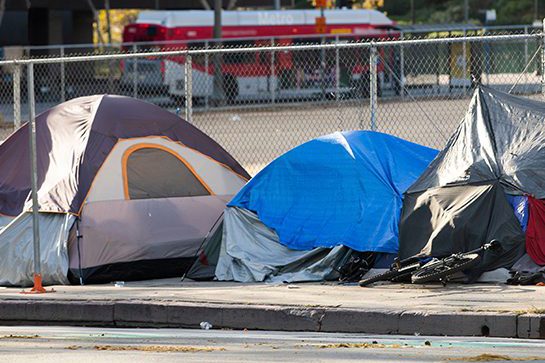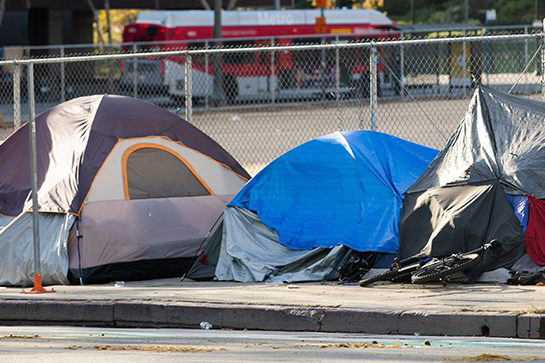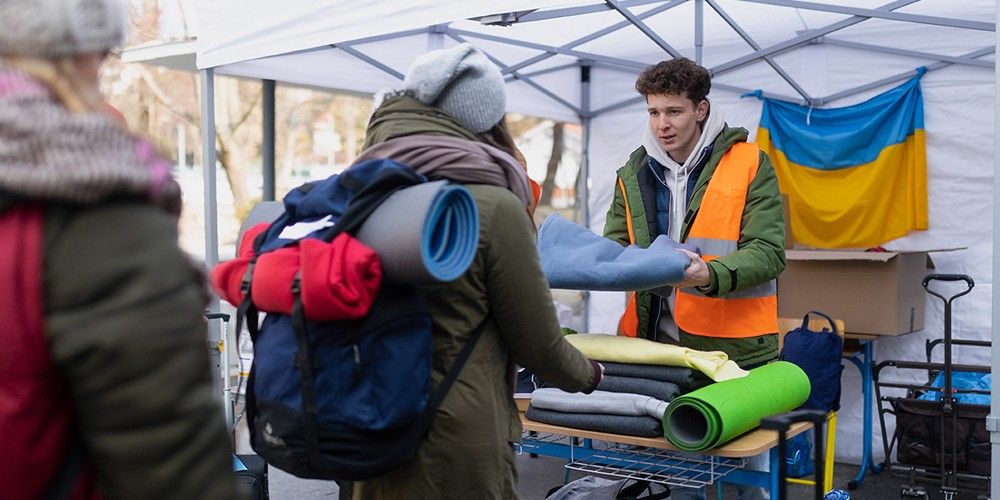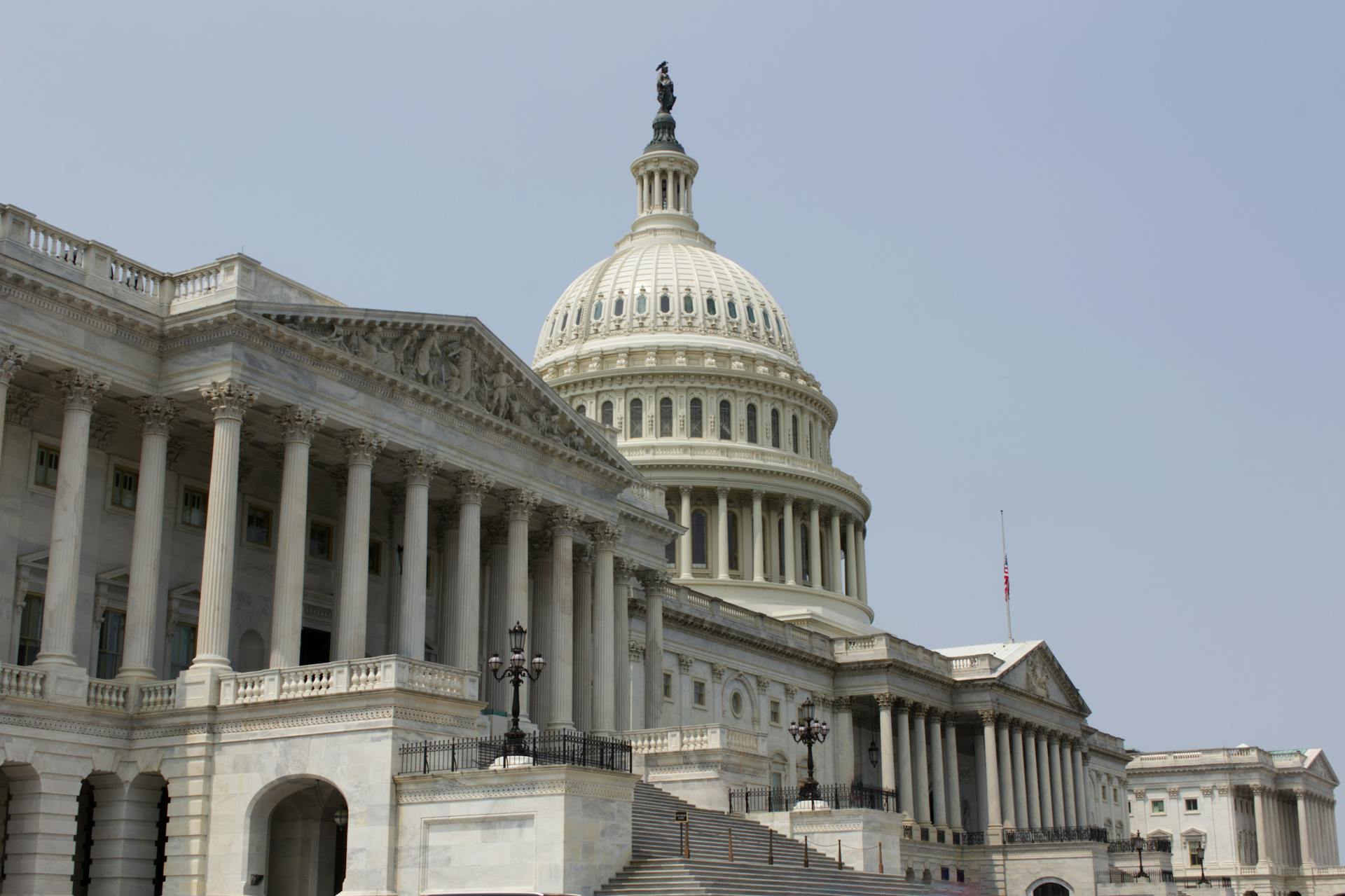The relationship between law enforcement and people experiencing behavioral crises or homelessness can be tense, sometimes escalating to the use of force and leaving root causes unaddressed. However, communities across the United States are piloting new models of community response teams to de-escalate nonviolent behavioral health incidents and coordinate services.
In a 2018 survey, 78 percent of surveyed mayors in the United States responded that law enforcement had some degree of influence over the city’s homelessness policies. It’s not comprehensive, but it’s one data point that illustrates that emergency services—including law enforcement—will probably always have some kind of interaction with homeless populations and/or those experiencing behavioral health crises.
It’s also known that mental illness can easily be misunderstood by those who aren’t mental health responders, including many police officers. When a responder is not trained to recognize acute episodes of, say, psychosis or other similar disorders, they might misinterpret such behaviors as indications of hostility. As one law journal article noted, “Those suffering from psychological crisis are more likely to misinterpret the words and actions of others as threatening, which can lead to aggressive behavior.”
In this article, we’ll dive deeper into the emerging model of community response teams (sometimes referred to as co-responders) to behavioral health incidents in communities, many of which are embedded within emergency services, and how these programs are utilizing coordinated intake and entry for human services organizations.

Context: Substance Abuse, Psychiatric Disorders, and Aggressive Behavior
It’s important to define “aggression,” a term used across many fields including social science, political science, psychiatry, and criminology. On a social level, aggression can be defined as any behavior (verbal or physical) targeted toward oneself, other people or animals, or objects, with the intent to cause harm.
Importantly, substance abuse can correlate strongly with aggressive behavior, especially alcohol. Mental illness alone, however, is not a slam-dunk predictor of violent behavior. For instance, one meta-analysis summarizes how patients with schizophrenia—while mostly nonviolent—are at increased risk of harmful behavior toward themselves or others when combined with drug use:
Alcohol and drug abuse (especially nicotine) are common in schizophrenia, for reasons that are not entirely clear…
Comorbid substance abuse occurs in 20%–70% of patients with schizophrenia, particularly younger male patients, and is associated with increased hostility, crime, violence, suicidality, noncompliance with medication, homelessness, poor nutrition, and poverty. Drug use and abuse can also increase symptoms.
Source: Medscape.
So it stands to reason that, when a community resident calls law enforcement to report a behavioral incident, the responding officer has reason to believe this person could become violent if substances are involved—but the caveat is that substance abuse does not necessarily indicate mental illness, and mental illness does not necessarily predict aggression but rather contributes to the risk factors.
Therefore, trained mental health professionals should more accurately recognize an acute phase of psychiatric disorders—such as schizophrenia, bipolar disorder, and other forms of psychosis—and therefore recognize signs of potential hostility and less-dangerous situations, which in turn can mitigate the need for police to respond with use of force in the interest of public safety.
That’s where community response (co-responder) units come in.

Trend: Emergency Response Plus Mental Health Service
Arrests and citations for low-level offenses by people experiencing mental illness or homelessness can create a “revolving-door” effect, depending on state laws, where the adverse behavior is only delayed but not treated. And, as one team of researchers concluded, “Substance use disorders are among the most prevalent psychiatric disorders, but only a minority of such patients seeks treatment,” which contributes to continuing the cycle, along with psycho-social factors (i.e., lack of support network, housing, healthcare, financial stability).

For that reason, many communities are piloting emergency services that tend to include:
- Mental health professionals with specialization in severe psychiatric disorders and de-escalation
- Specialized police units with high training in performing outreach for coordinated referrals, in place of low-level citations and unnecessary arrests
- Community care coordination systems that create client records of interactions, for future potential incidents
The purpose of these co-responder or community response programs varies, but the gist is this:
- Reduce recidivism in the criminal justice system by providing treatment and other services
- Increase positive relationships with emergency services and vulnerable populations
- Coordinate community care with greater efficiency, to improve data quality
- Lower the occurrences of use of force among those experiencing behavioral crises
Examples of Community Responders in Action
In Durango, Colorado:
Bennet’s bill would pair a mental health clinician with a paramedic or EMT to respond to certain low-risk 911 calls, train crisis workers to respond to service calls, provide mental health services to those in crisis, stabilize encounters between people in crisis and law enforcement officers, and connect people with resources to address their issues. Additionally, the bill would implement case management teams to follow up with people and help develop specific solutions to reduce repeat interactions with emergency services.
Source: The Durango Herald.
In Topeka, Kansas:
The CIT model encourages communities, families, law enforcement officers and mental health professionals to act as a compass for persons with mental illness. An increase in illegal narcotic and alcohol abuse and the “deinstitutionalization” of mentally ill citizens can lead to an increase in homelessness and potential violence, and a consequent increase in involvement by law enforcement.
Source: The City of Topeka.
The Heart of It All: Community Care Coordination
“Several demographic and clinical risk factors have been reported such as male sex, socioeconomic deprivation, cannabis use, suicidality, and clinical symptoms such as impulsiveness and excitement,” according to one survey of studies, which begs the question: How would a responding officer know about these risk factors without a record of the person? And how can there be coordination of services and behavioral health response if there are no centralized databases for outreach and response?
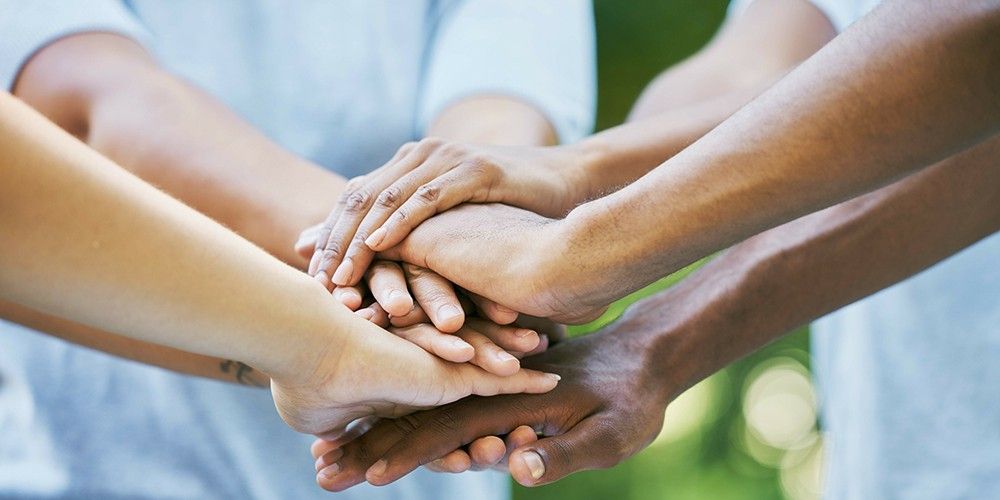
As one police chief put it:
Officers respond to an array of needs from the community. Whether they are new officers on the beat or veteran officers, police officers, often, work alone or side by side with another officer; however, at times, we must acknowledge that the partner they truly need does not actually need to wear a police uniform. Frequently, a different set of skills and training are what is called for—and that is where co-responder models can assist.
Source: National Policing Institute.
Eccovia’s experts have a solution for this issue: outreach and database platforms that make it seamless between response, to intake, to assessment, to care coordination. If you’re ready to explore a specific solution for your community’s co-responder team, we encourage you to schedule a demo with one of our experts.
If you’re still learning about this potential program, enroll in our educational email series today!
